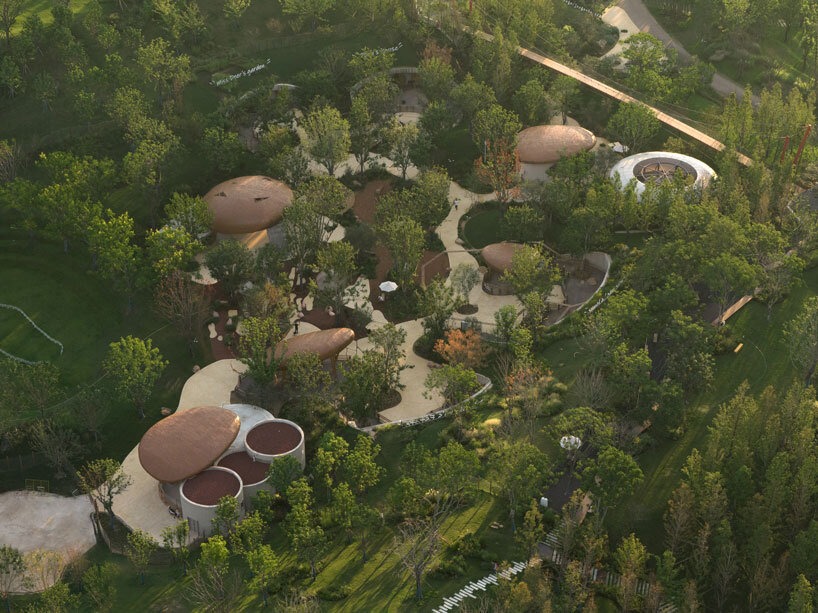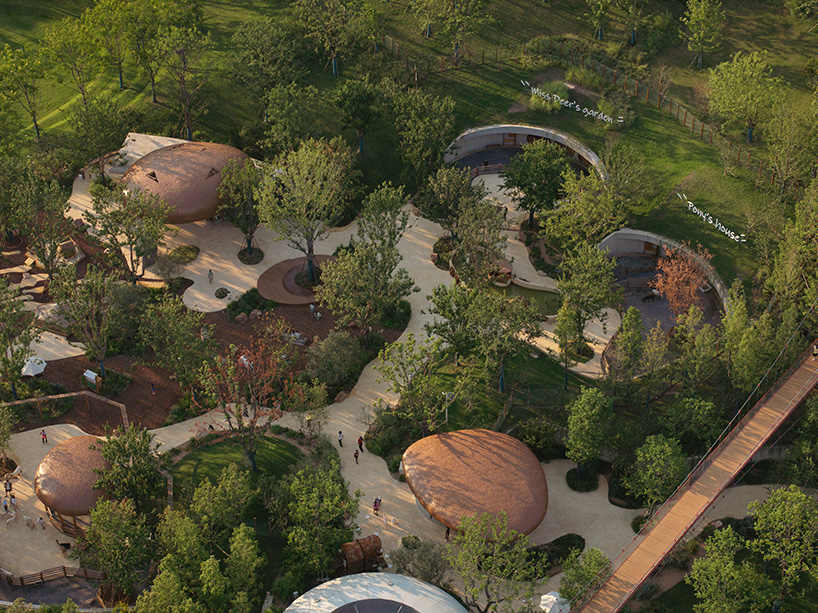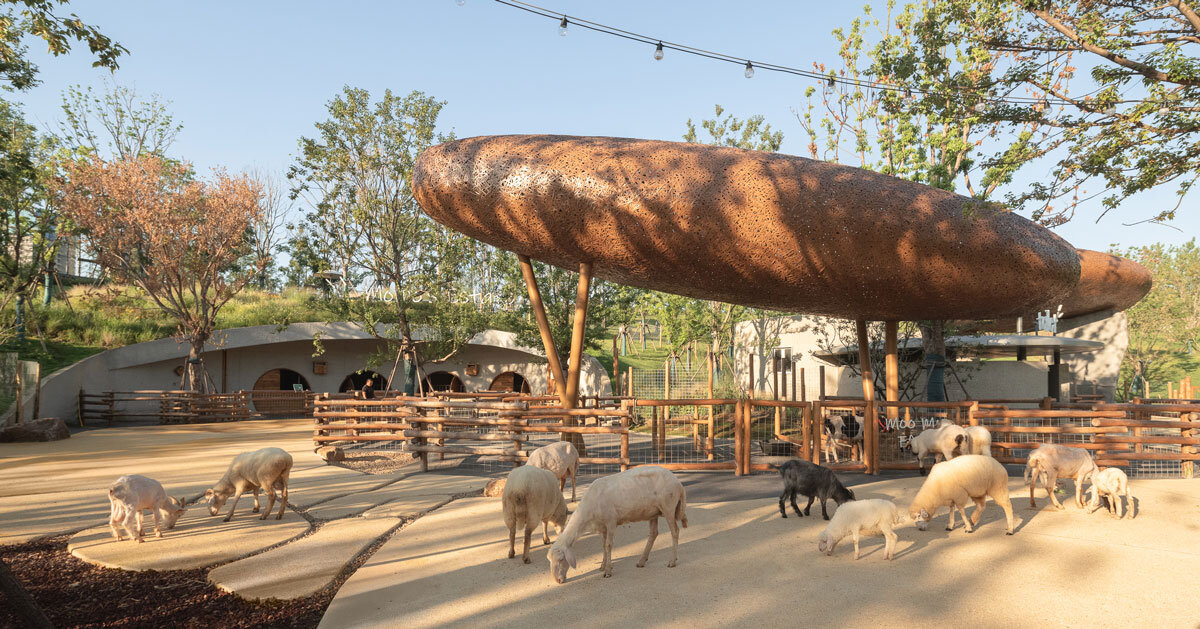Various Associates shapes LuxeIsland Farm ecological retreat
Located along the Zhujia River in Jiang’an District, Wuhan, LuxeIsland Farm, designed by Various Associates, forms the core of the 230,000-sqm LUXEOASIS development. Positioned between northern hillsides and a southern pier, the project is conceived as a small-scale retreat that combines ecological recreation, educational programs, retail, and cultural activities within a unified landscape framework. Commissioned for both architectural and interior design, Various Associates developed LuxeIsland Farm as a spatial experiment in community interaction and environmental integration. The project explores the themes of ‘Future, Fun, and Interaction’ through an architectural language that juxtaposes geological massing with craft-based detailing.
The farm masterplan adopts a circular layout that connects animal enclosures, creative workshops, retail spaces, and dining areas. New structures are embedded within the terrain, creating a continuous rhythm across the valley. Volumetric forms resembling scattered stones or meteorites emerge from the ground, interwoven with misting systems and vegetation. Semi-submerged animal enclosures with green roofs reduce visual impact while enhancing the sense of immersion in the landscape. Each building is characterized by the use of natural materials such as bamboo, timber, and stone. Bamboo weaving, referencing local craft traditions, is reinterpreted as a structural and aesthetic device, forming roofs and facades that mediate light and shadow across the site.

all images by SFAP
Bamboo pavilions and earthen forms shape LuxeIsland Farm
Set against the hillside, the animal enclosures are designed with minimal intervention to preserve the existing terrain. Their partially earth-sheltered configuration blends the farm into its surroundings, while open paddocks and shaded frameworks create varied environments for alpacas, deer, and other animals. The design emphasizes both safety and proximity, encouraging educational and recreational interaction between visitors and animals.
The creative workshop is a lightweight bamboo-woven pavilion composed of a domed canopy and stone-like supports. Triangular perforations in the bamboo surface allow filtered daylight to create dynamic shadow patterns. The open layout functions as a café, rest area, and flexible workspace, with operable facades connecting directly to surrounding greenery. A secondary pavilion, a ‘silver disc,’ houses an ice cream and donut station. Its metallic surface contrasts with the earthy tones of adjacent structures, serving as a visual focal point within the site. A nearby feed house encourages closer interaction between visitors and animals, reinforcing the site’s social and experiential role.
The feed barn and washroom are designed as a paired composition, characterized by bamboo-and-metal roofs that appear to float above textured stone and cement finishes. The design team at Various Associates uses artisanal coatings and muted color palettes to emphasize material honesty and spatial coherence across programmatic functions. At the Forest Star Stage, a flexible outdoor area supports events and performances. Defined by sawdust flooring, hay bale seating, and ambient lighting, it transforms from a daytime resting area into an evening gathering space.

LuxeIsland Farm by Various Associates anchors the LUXEOASIS development along Wuhan’s Zhujia River
LuxeIsland Farm integrates ecology, leisure, and rural urbanism
Material selection reflects ecological awareness and formal precision. Bamboo, timber, and red earth establish a connection with the regional landscape, while metal and concrete articulate a contemporary contrast. Through these combinations, LuxeIsland Farm demonstrates how natural materials and constructed form can coexist within a performative and educational setting.
By blending architectural form, environmental design, and cultural programming, Various Associates positions LuxeIsland Farm as both a functional agricultural environment and an evolving social landscape, an example of how contemporary rural architecture can integrate ecology, leisure, and urban experience.

the project integrates ecology, recreation, and cultural activities within a unified landscape framework

